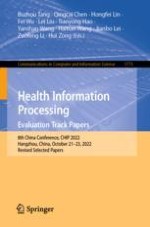2023 | Buch
Health Information Processing. Evaluation Track Papers
8th China Conference, CHIP 2022, Hangzhou, China, October 21–23, 2022, Revised Selected Papers
herausgegeben von: Buzhou Tang, Qingcai Chen, Hongfei Lin, Fei Wu, Lei Liu, Tianyong Hao, Yanshan Wang, Haitian Wang, Jianbo Lei, Zuofeng Li, Hui Zong
Verlag: Springer Nature Singapore
Buchreihe : Communications in Computer and Information Science
